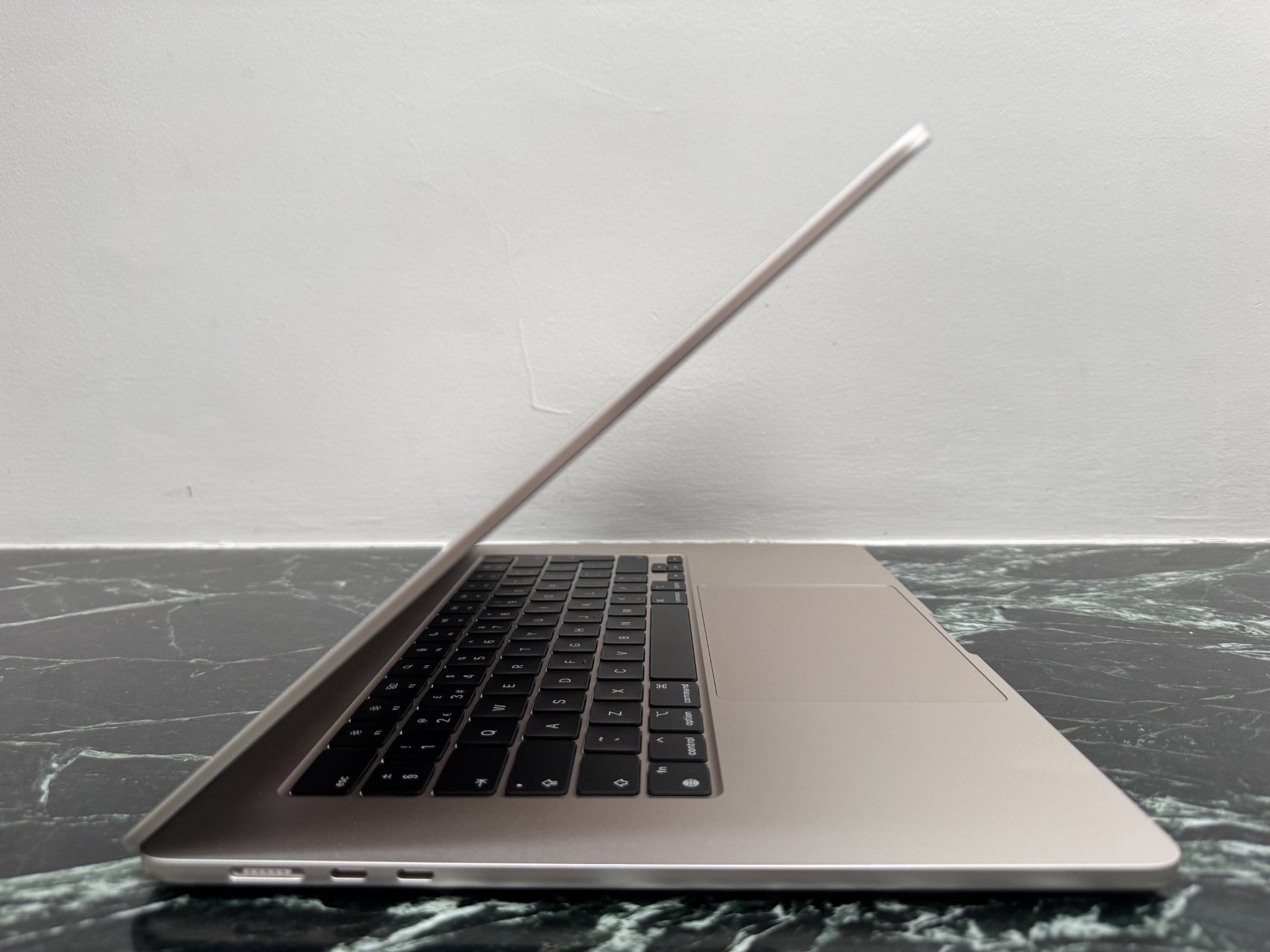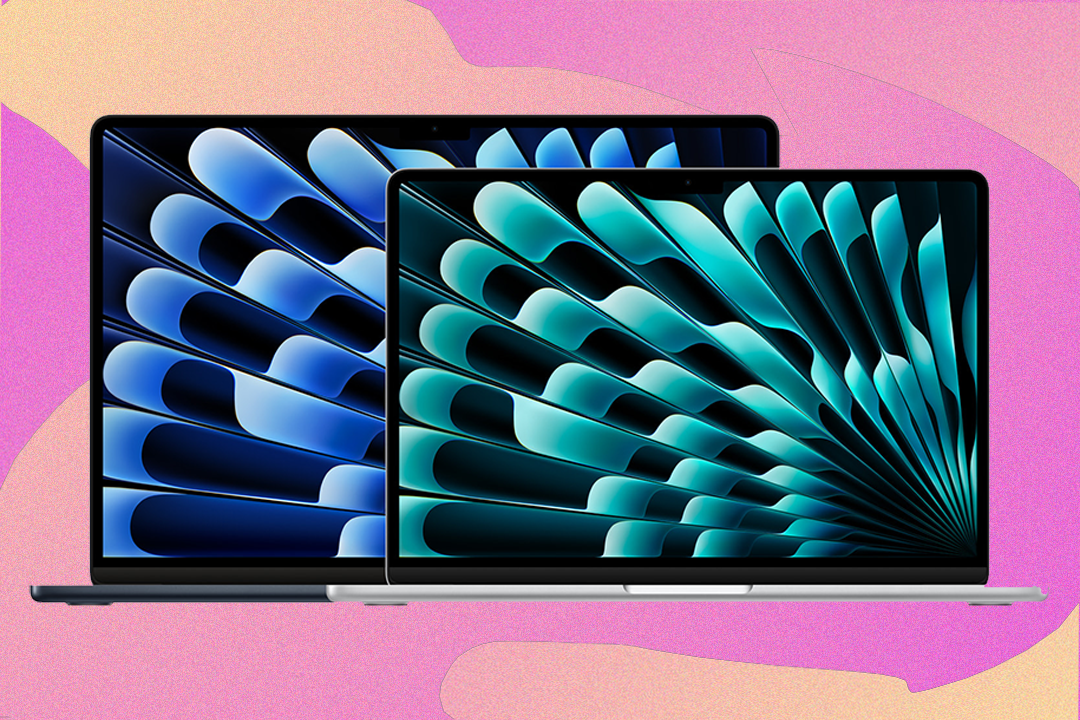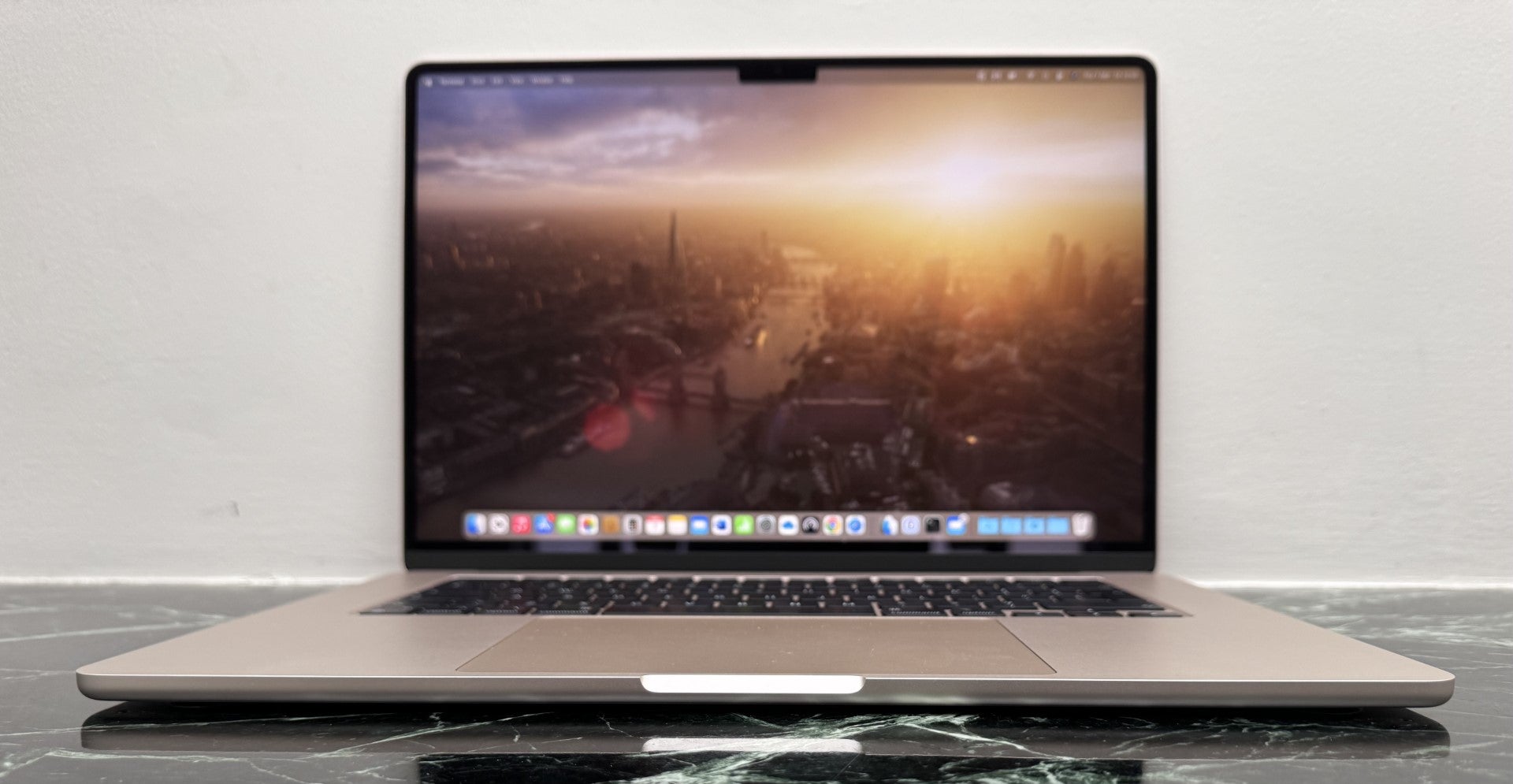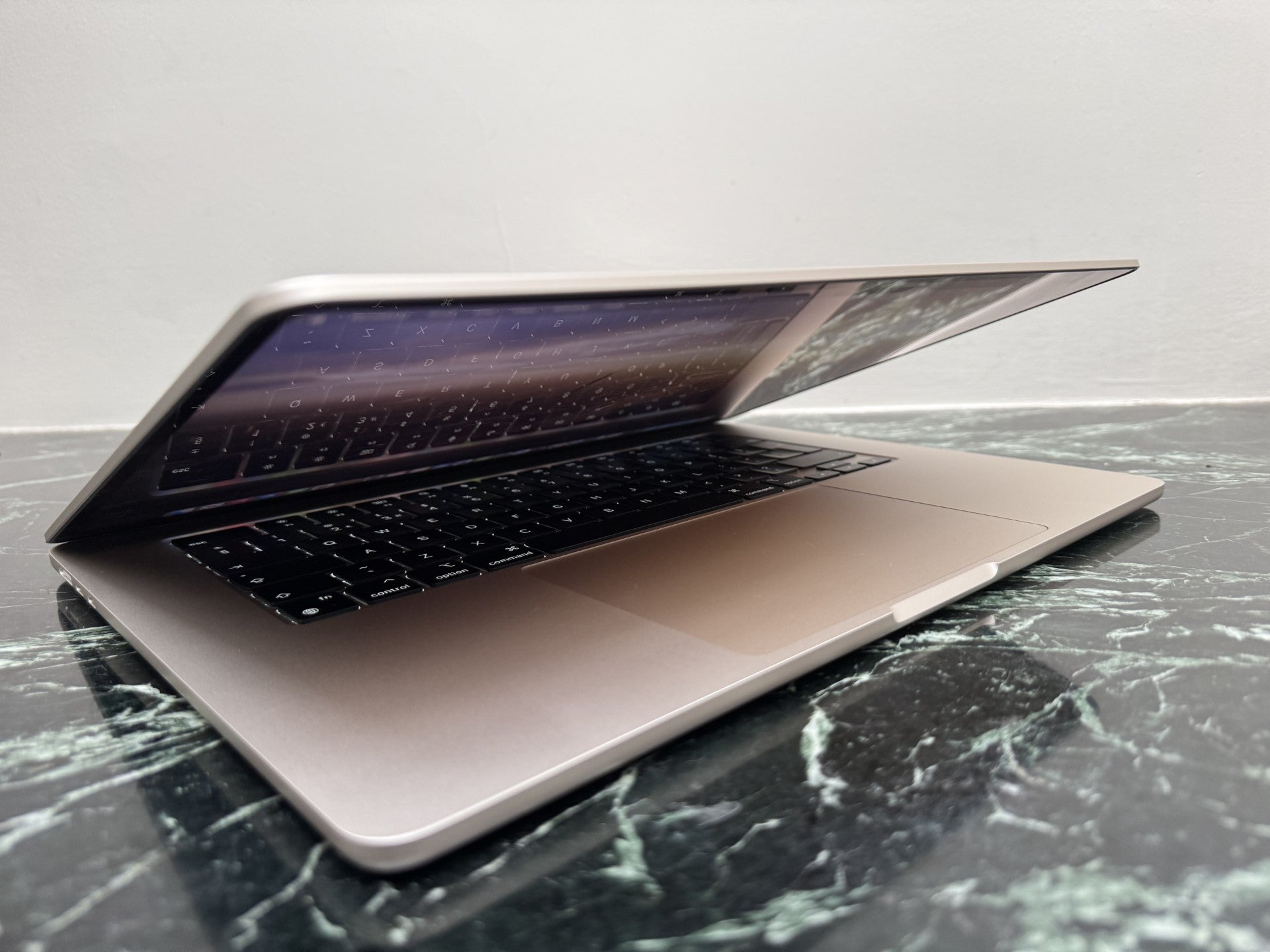Apple MacBook Air M3

- Dimensions: 30.41cm x 21.5cm x 1.13cm (13in), 34.04cm x 23.76cm x 1.15cm (15in)
- Display size: 13.6in and 15.3in
- Display specs : LED-backlit, 500nits brightness
- Display resolution : 2,560 x 1,664 (13in), 2,880 x 1,864 (15in)
- Weight : 1.24kg (13in), 1.51kg (15in)
- Storage: 256GB/512GB/1TB/2TB
- Processor: Apple M3
- RAM: 8GB, 16GB, 24GB
- Colours: Midnight, starlight, silver and space grey
- Why we love it
- Amazingly light
- Super-fast processor
- Good value
- Midnight finish resists fingerprints
- Take note
- Design hasn’t changed
Design
The MacBook Air comes in two screen sizes, 13.6in and 15.3in. They really are breathtakingly lightweight, weighing 1.24kg and 1.51kg respectively. Size, weight and price apart, the two models are identical to each other.
The Air was redesigned in 2022, replacing the tapered edge of earlier models with a flat lid, sharper edges and bigger screen (with a cut-out for the FaceTime camera to peep out of). It also saw the return of MagSafe, that clever magnetic power connection that means if someone trips on your cable, it detaches rather than sending the laptop flying – again, remember just how light it is. That said, battery life is now so good, you’re unlikely to be tethering it to the mains while you use it anyway. You can also charge the Air through either of the USB-C sockets on the left edge.
There are no changes to the design this time around, apart from one: there are four colours, silver, space grey, starlight and midnight. Midnight is a dark, almost-black shade that glints blue in the right light. Until now, it’s been a bit of a fingerprint magnet, but the new Air has an upgraded finish, not a coating but an anodised seal which reduces fingerprints showing up. This is similar to the seal introduced on the space black MacBook Pro last October, but it’s the first time it’s appeared on the Air.
Read more: iPhone 15 Pro and iPhone 15 Pro Max review
Personally, I still think Starlight is the best colour in the range. It’s essentially silver, but catch the right light on it and it gleams golden. It’s stunning.
Does it matter that there’s no visible difference between this Air and the last model? It really doesn’t. The Air remains the best-looking, best crafted super-thin laptop, perfectly balanced so you can open it with one hand. It continues to have the most inviting keyboard where the keys are sculpted so your fingers find them effortlessly and each has plenty of travel. There’s also a sumptuously big and responsive trackpad.
The display is also one of the best around, surrounded by thin bezels so the screen reaches right into the corners. Not everyone will like the cut-out at the top of the display for the camera, but it’s pretty unobtrusive: the menu bar on the Mac is deeper so it doesn’t cover anything important, and video playback, which also looks great, is letterboxed.
Performance
The new chip is the big news on this MacBook Air. A few years back, Apple switched from Intel processors in its Macs to homegrown Apple Silicon. And everything changed. From the first processor, the Apple M1, performance speeds took off. So efficient was it that the MacBook Air with M1 didn’t need a fan, running fast and completely silently (that’s still the case now with this model).
Then came the M2, which was faster still, though not the exponential step change between Intel and M1. And last October, Apple announced the M3, putting it in the MacBook Pro range initially.
The Apple M3 is extremely fast. Actually, the M2 was no slouch, handling every task I routinely throw at it with aplomb. But the M3 is faster, and means that unless you have rarefied and unusual programs that are particularly memory-intensive, this chip will cope.
Read more: Best laptops for all budgets, ranked by experts
Here’s how you know it’s fast: the M3 chip is in one model of Apple’s top-drawer laptop, the MacBook Pro. The lowest-priced 14-inch MacBook Pro uses the identical processor now found in the MacBook Air, with the same amount of active memory (8GB of RAM). And, by the way, that Pro laptop costs £600 more than the 13-inch Air, £400 more than the 15-incher. There are other differences that make the Pro better, as we’ll see.
But it makes clear just how powerful the new Air is. Everything happens fast, and moderately heavy-duty programs like video processing apps perform at speed and for extended periods.
You can also power two displays, which is a neat productivity extra. That’s either the MacBook Air screen and one external one, or two external displays when the Air’s clamshell is closed.
Battery life is quoted by Apple at 18 hours, the same as for the M2 model, and that felt about right in my testing of the 15in version.
Pricing
Apple has done something unusual here, it’s cut the prices of the new models significantly. Last week, a 13in MacBook Air with M2 processor cost £1,149, and a 15in model £1,399. This week, swapping the M2 processor for M3 will see you pay £1,099 and £1,299, savings of £50 and £100 respectively for a significantly better machine.
Also last week, you could buy a MacBook Air with an M1 chip inside. That was the model with the old-style design, with tapered lid. That cost £999. Now, the entry-level Air has the new, improved design and the M2 processor, but for the price of the old model, £999. It maintains the design of the M2 series, that is, it doesn’t have the new anodised seal on the midnight finish.
Read more: Best iPad deals March 2024
For many people, the M2 Air will be fast enough, though the faster performance of M3 may buy headroom which will see the laptop last even longer.
Then there’s the MacBook Pro. The 14-inch MacBook Pro costs £1,699 and has the identical processor in the new Air. But for the extra money you get a bigger display than the 13-inch Air. That display offers miniLED backlighting which looks spectacular and can go much, much brighter than the Air. It also has higher storage, 512GB instead of 256GB, better speakers, better microphone and a fan so that you can run the most demanding apps for even longer.









